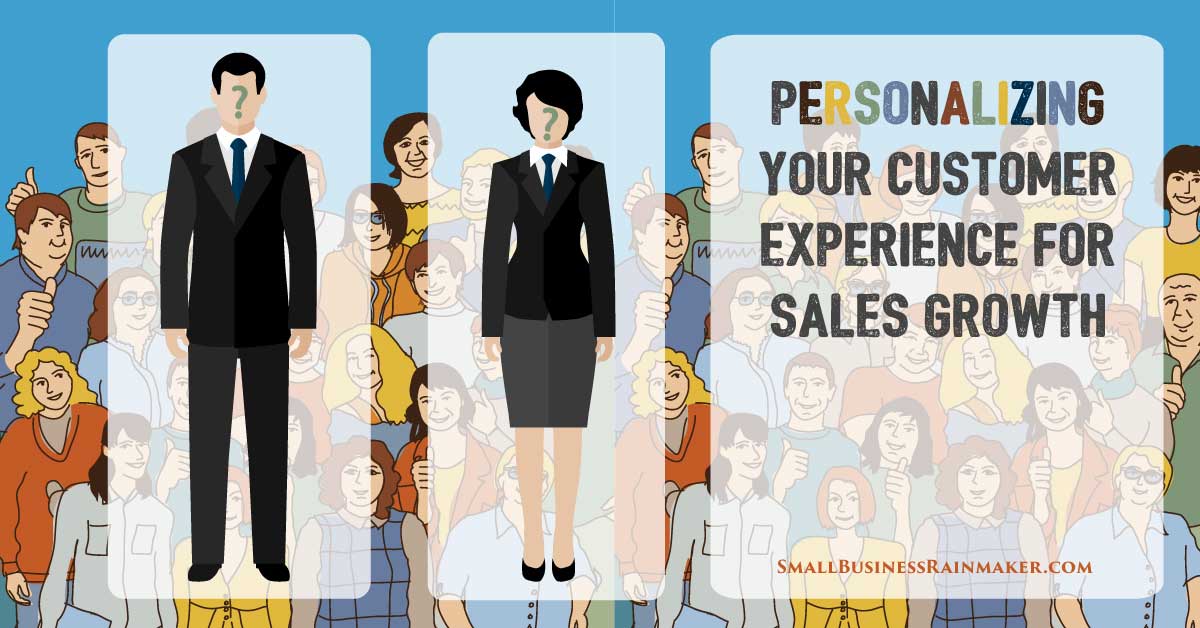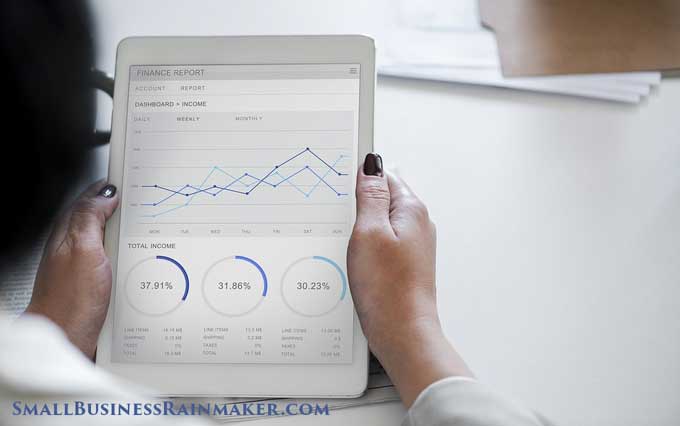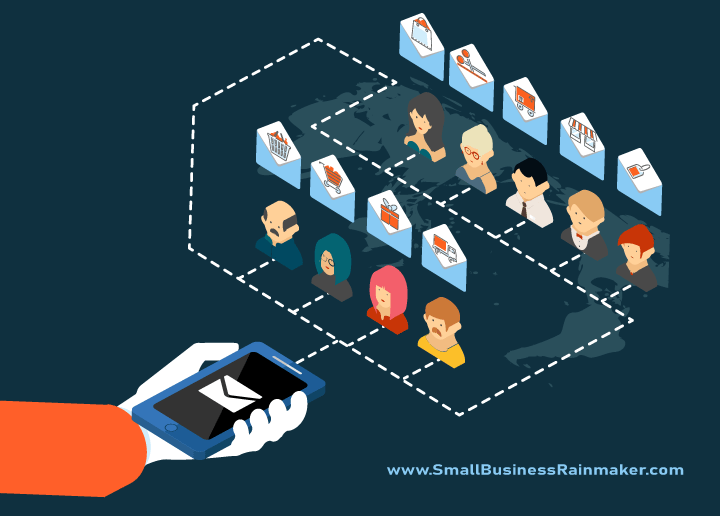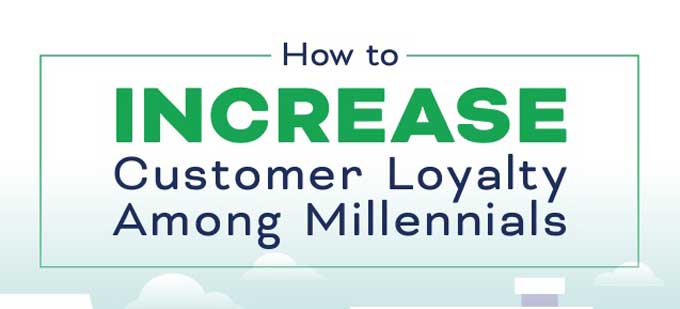
It doesn't matter if you have a storefront in a newly revitalized downtown area, if you're an e-commerce website, or if you're based in the same location where you've been for decades. You can always improve your customers’ experience and usually increase sales too. The few points that hit on all types of businesses and industries include a mix of technology and traditional customer management.
How to Increase Your Sales by Personalizing Your Customer Experience

Identify Personalization Opportunities
Before anything else, you need to employ a personalization metric. Some small businesses don't need to launch a huge survey to question their customers. It's likely that the owner or key point of contact can sit down and give quality insight into the buying habits and personal preferences of certain customers.
For everyone else, you’ll need to find some way to reach your customers. Immediately you’ll have a few stumbling blocks to overcome.
First, customers are resistant to personalized marketing efforts … an effect of overly-impactful marketing campaigns. Second, it’s difficult to engage customers with something like a survey. Third, defining personalization metrics is not as simple as analyzing sales data. Finally, if you're not working on an online platform, this data may seem impossible.
Don't worry. You don't need a CRM program to start defining personalization metrics or tracking new opportunities.
Use this step-by-step system to plan, define, and implement personalization opportunities:
- Create a benchmark for your ideal customer.
- Define KPIs such as most viewed content, segment performance, new versus returning visitors, bounce rate, click-through rate, and visitor loyalty.
- Have clear ways to track this data. E-commerce may rely on Google Analytics, where traditional stores may rely on extracting this info from their sales data.
- Have a consistent way of storing and working with this data. A database is nice, but many companies may choose to use a more familiar option such as Microsoft Excel.
- Bring together key decision-makers who can work with and understand this data.
You can use surveys, a CRM or sales management software, or rely on your sales staff for insightful data gathering.
Give Customers Profiles and Web Portals
Personalization can improve conversion rates by as much as 63%. You can get in on this action too with a web portal. Although implementing web portals or specific customer profiles can be difficult, it can also have a huge payoff in data and personalization opportunities.
When bringing in a web portal, you will likely need additional software solutions. On top of that, you'll want to ensure that your customers’ profiles or web portals are secure. The payoffs of bringing in a web portal though tie directly into customization.
With a web portal or personalized customer profiles through your website, you can track sales by customer, intimately track customer buying habits and preferences, and know that all of this data is reliable.
As mentioned above, the more data you have about your customers, the better. Additionally, web portals or profiles allow your customers to set preferences which will improve their experience. Creating something entirely for the individual customer is the first major step in changing the experience your customer receives after collecting as much personalization data as possible.
Customize Your Products
Most businesses cannot thrive in the mass production market if they're creating thousands of the same item. Instead, there's a sweet spot between mass production and customization. Consider adding complete customization to your product lines.
Start with a few products that seem to sell well occasionally. You don't want to change your entire approach or business model or alter the offering of your best-selling products. Focus on the products which sell just enough to get attention but allow your customers to have more control over design.
Further Segment Your Marketing
Commercials, web ads, and even radio announcements can sound too all-encompassing. Make your marketing a little more personalized. No, you don’t need to go to great lengths and accommodate eight different submarkets within your customer base.
However, when you further segment your market and tailor your existing campaign for specific patterns of consumer buying behavior, you’ll see a substantially larger impact.
Consider segmenting your market by:
- Buying frequency
- Age
- Shared interests between customers
- Collection of defining factors such as age, location, income, education level, etc.
To see segmentation in action, you need look no further than your local car dealership. Relying on the concept of brand loyalty, dealerships will contact those who've leased or purchased cars with updates about upcoming models from the same brand.
Then, using income levels which they acquired when processing your credit on the previous contract, they'll provide options or advertisements for cars that would likely fit into your budget. This approach is vastly different than the mail flyer from ten years ago, where every household would receive the same information on available vehicles.
Speak with Your Customer, Not “to” Them
Companies primarily write blogs in the second person, will market using the second-person voice, and even outright tell customers what they want. It's not uncommon to hear an ad that says something like, "You need insurance now!"
However, customers are smart. They're catching onto marketers, and it's negatively impacting the customer experience. People are turning away from brands or companies that tell them what to do. Instead, they want to build a simple relationship built on trust. Stop telling your customers what to do and instead, give them that relationship.
When interacting with customers on any level from marketing to staff on your sales floor, make the conversation about both of you.
For example, try switching from:
- "You'll love this" to "I was looking at your past purchases, and I think this is a good fit."
- “This is what you need" to "You're ordering so often, why not set up a recurring order?"
- “I see you’ve had trouble in the past” to “We know your last experience wasn’t great.”
When you adopt a "we" approach to sales or problems, it becomes personal. While these situations require a fair amount of work on your sales team, it can make a huge impact. If the goal is to perform on this level, consider using a customer relationship management software or CRM to track customer interactions as well as sales.
Changing your customer's experience doesn't happen overnight. You'll need the prowess of your staff along with the internal processes that impact consumers. Consider which customers tend to lean towards which products and adapt your marketing strategy. Additionally, consider altering how your sales team communicates with customers. Finally, give some advanced technology a try.
 Lara Douglas is a young woman who loves interior designing and home decor. She is passionate about new trends and fashion forward home décor ideas. She regularly posts at Neon Signs Depot.
Lara Douglas is a young woman who loves interior designing and home decor. She is passionate about new trends and fashion forward home décor ideas. She regularly posts at Neon Signs Depot.














Leave a comment